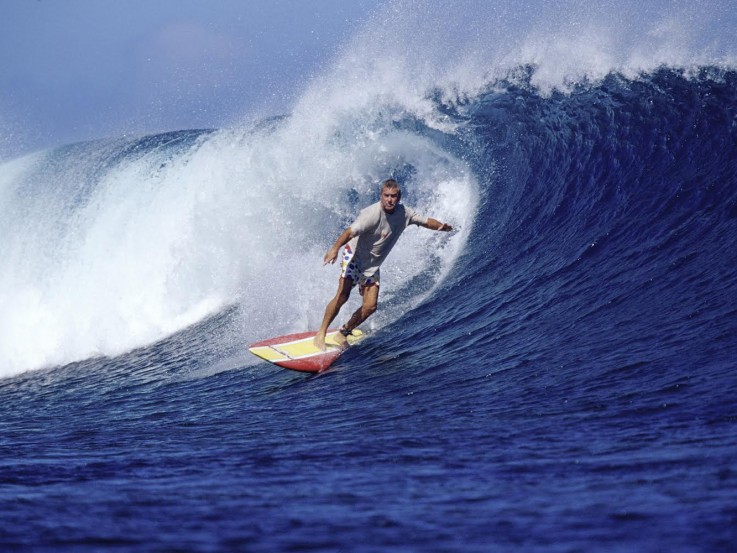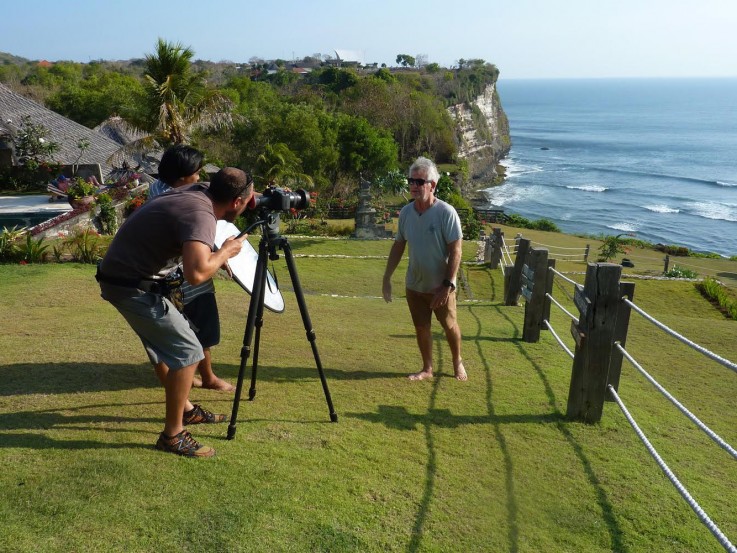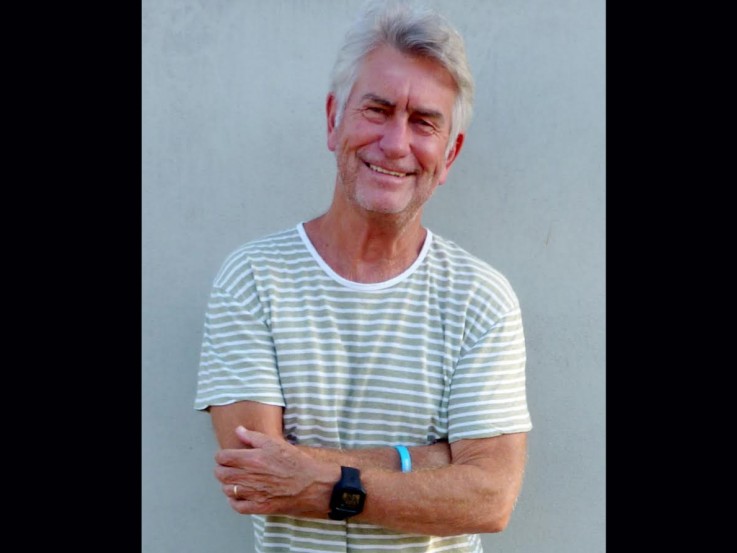Phil Jarratt - Writer, Editor, Entrepreneur
Ask Phil Jarratt what he considers his job title to be and he’ll loosely throw around the term journalist. He says, at heart he’ll always be an old journo in spite of not working as one in over 30 years. However, from a surfing perspective, given his diverse experience in the industry and his extensive knowledge of the sport, he could easily be labelled a guru.
He’s written more than 30 books, a dozen or so that are surf related including Salts and Suits, which was short listed for the Blake Dawson Prize (business literature). He was editor of Tracks magazine from 1975-78, a regular contributor to Surfer magazine and he published and edited the Australian edition of the Surfer's Journal magazine. He was the head of marketing for Quiksilver Europe and a special projects manager for the brand in California. He’s been named one of Australia’s 50 most influential surfers by Surfing Life magazine and has been awarded Surfing Australia's Surf Culture Award three times. Phil is also the founder of the Noosa Festival of Surfing, which began in 1998.
How did you get involved in surf journalism/ writing?
I did a cadetship with the Sydney Morning Herald, which was back in the day when that was all you needed to become a jounro. I dropped out of an Arts Degree I had started because of the demands of the newspaper, I’d planned to go back but never did. Over the years I’ve written about 30 books and although only a third or so have been about sport or surfing I’m often tagged as a veteran surf writer. I love the involvement in surfing but I like to diversify as well. My most recent venture, Bali: Heaven and Hell, enabled me to write a book about more than just surfing but still incorporated surfing history.
What makes a good surf writer?
Anybody can be a freelance journo or writer - whether it’s about surfing or anything - without any necessary qualifications. When I was the editor of various surfing magazines some of the best contributions came from people who weren’t trained journalists, they came from people from all walks of life who might have been surfers themselves and who found they could write about something they were passionate about. Aside from passion, a good surf writer needs a sense of humour. I think you can make any kind of surf story more readable if it’s injected with a bit of humour and a light-hearted touch. I think surfing is such a fun thing to do that anything you write about should be laced with that feeling.
Who or what has helped you in your career?
I’ve had a few good mentors, but my greatest mentor, from early in my career was John Witzig. John is an architect, graphic designer, journalist and photographer among many other things, he was also one of the founders of Tracks Magazine and he edited a few foundation surf publications in the 60s, which I contributed to. He helped me out in many ways and when I became a cadet journalist he seconded me to write for Tracks, where I eventually succeeded him as editor.
What have been some of your career highlights?
The Tracks editorship really set the path for me and my lifelong involvement with surfing. Had I not had that I wouldn’t have gotten to know as many people in the industry, particularly the pro surfers, whose friendship I still have today. Apart from my love of the pure act of surfing, it’s been those friendships that have kept my interest in writing about the sport, the culture, the whole deal.
More recently, a highlight has been founding and developing the Noosa Festival of Surfing, which I did in the late 90s. My daughter and I still run it and I’m proud to say that it’s grown from being a small-scale affair to a nine-day extravaganza with more competitors that any other event in the world. We often have three generations of family involved, which is great to see.
Lessons learned…
There have been a few! Deciding to publish my own surfing publication was not a good idea, especially during a bad time for the Australian dollar and when we were printing offshore in US dollars. I also had a couple of shots at publishing and lost a lot of money and got a bit bruised.
Where do you see the future of the surfing industry
In a way the industry is heading back to the future. I don’t think we are ever going to see another period in the industry where a small number of brands – i.e. the big three: Quiksilver, Rip Curl and Billabong - are completely dominant again. There will be another generation of brands, a small number, that will be quite diverse, privately held and will cater for specific groups. It’s going back to where the industry was 30 to 40 years ago, which I think is a healthier place to be.
What advice would you give to budding surf writers?
Don’t! That’s terrible to say, but now that I’m at retiring age it does hurt to see contemporaries who’ve spent their entire lives at one newspaper office or one TV station, who are heading off into their golden years, to their sumptuous beach house with their huge payout and their huge super. But I’ve never done that - I’ve always been a self-starter and have never worked for anybody for very long. I’ve always been a freelancer in some respect, maybe not a freelance journalist as such but a freelance entrepreneur and writer rolled into one. The financial outcomes of that are never easy. If you write full time you can also become very isolated and very frustrated. I’ve never had the luxury of just sitting down to write a book and have always had to juggle with a few different career strands. So I’m a little loath to be this old guy saying follow your heart and just go for it! On the other hand, I wouldn’t trade the good times and flexibility that I’ve had in my life that have enabled me to travel the world and surf great waves with great people. That’s not something you can do when you’re tied to a nine-to-five job.
Phil Jarratt's book titles include:
The Wave Game (1977), The Surfing Dictionary (1990), Mr. Sunset: The Jeff Hakman Story (1997), The Mountain and the Wave: the Quiksilver Story (2006), Salts and Suits (2010), Surfing Australia: a Complete History of Surfboard Riding in Australia (2012) and Bali: Heaven and Hell (2014).
Posted by: Jaclyn Knight, on October 23, 2014
Categories: Interviews
Latest Posts
Craig Sims - White Horses & Surfing Life Publisher
Luke Kennedy - Editor of Tracks Magazine
Simon ‘Swilly’ Williams - Surf Photographer
Jarra Campbell - the Bondi Alchemist
Greg Gordon - Owner of CR Surf
Shayne Nienaber - Surf Photographer
Alexa Hohenberg - Owner of Still Stoked
Christine Deveney - TapaReef Owner & Creator
Russell Ord - Surf Photographer
Richard Kotch - Surf Photographer
Categories
Interviews
Articles
Videos
Press Releases
Quiz
Archive
December 2018
November 2018
October 2018
September 2018
August 2018
July 2018
June 2018
May 2018
April 2018
March 2018
February 2018
January 2018
November 2017
January 2017
December 2016
November 2016
October 2016
September 2016
August 2016
July 2016
June 2016
May 2016
April 2016
March 2016
February 2016
January 2016
December 2015
November 2015
October 2015
September 2015
August 2015
July 2015
June 2015
May 2015
April 2015
March 2015
February 2015
January 2015
December 2014
November 2014
October 2014
September 2014
August 2014
July 2014
June 2014
May 2014
April 2014
March 2014
February 2014
January 2014
December 2013
November 2013
October 2013
September 2013
August 2013
July 2013
June 2013
May 2013
April 2013
March 2013











